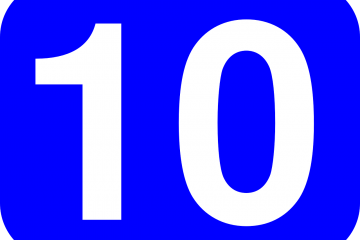In 1923, Claude Hopkins, the father of modern direct advertising, wrote:
“Advertising, once a gamble, has thus become, under able direction, one of the safest business ventures. Certainly no other enterprise with comparable possibilities need involve so little risk.”
Here we are, almost a century later, what do we see? Most ad campaigns fail, and marketing disasters are still commonplace.
So, was Hopkins wrong?
I don’t think so. I believe that most marketing disasters are avoidable – as long as you follow some simple rules.
Here are 7 of those rules:
Rule #1: Play with house money
When I started out as a marketing consultant, I took a unique approach: Rather than have my clients gamble on new forms of marketing, we’d improve their current marketing. Then we’d use those additional profits as “house money” we could use to test new marketing ideas.
That way, if these new marketing methods were unprofitable, it wasn’t going to harm the business.
Rule #2: Give yourself house odds
If most new ad campaigns fail – at least, initially – then it makes sense to treat them as experiments. And that means, run the ads long enough to get a statistically reliable result.
If the campaign was profitable, keep running the ads. If not, stop them.
That way, when you win, you win big. When you lose, you lose small.
As Hopkins wrote,
“A man has what he considers an advertising possibility. But national advertising looks so big and expensive that he dare not undertake it.
Now he presents it in a few average towns, at a very moderate cost. With almost no risk whatever. From the few thousand he learns what the millions will do. Then he acts accordingly. If he then branches he knows to a certainty just what his results will be.
He is playing on the safe side of a hundred to one shot. If the article is successful, it may make him millions. If he is mistaken about it, the loss is a trifle.”
Rule #3: Don’t attempt the impossible
Before you spend money on marketing, ask yourself: How much are you willing to spend to bring in a customer?
That’s not, “How much would you like to spend?” It’s how much are you willing to spend i.e. At what cost per acquisition would you stop running your ads?
Knowing this number allows you to perform a “reality check.”
For example, if you’re willing to pay up to £25 to get a new client, and you know your website converts 2% of your visitors, then you should be willing to spend up to £0.50 to get a visitor. (Assuming the visitors convert at the usual rate.)
If AdWords is going to cost you £2 a click, then you know it’s unlikely to be profitable.
Better to figure that out ahead of time than to spend £1,000 on clicks and realise you’ve only gotten back £250.
Rule #4: Don’t be a pioneer
Ten years ago, the online gurus would talk about finding a niche that no-one else had spotted. Nowadays, if you don’t see anyone in your niche, it probably isn’t profitable.
So before you invest in marketing, look to see if anyone else is doing what you’re planning to do.
If not, ask yourself why not.
Rule #5: Think like a prospect
You’re selling to people. Even if you’re selling B2B, you’re still selling to people. And people act like people.
Fortunately, you’re a person, too. So you know what it’s like to see ads, and either be persuaded or not persuaded.
Before you run your ads, put yourself in the shoes of your prospect. If you were him and you saw this ad, how would you feel?
Excited? Indifferent? Sceptical?
Is it a unique and new solution to your problem? Or the same old stuff you’ve seen many times before?
And, if you’re advertising on Google, look at your competitors’ ads. How does your ad compare? Better? Worse? Or the same old, same old?
If you want a good click rate, they’re going to need to be better.
Rule #6: Use best practices
Effective advertising tends to follow certain rules. And, if you don’t know the rules you are, as the saying goes, cruisin’ for a bruisin’.
So, if you’re doing your own marketing, you should at least understand the basics of a good ad.
I’d recommend the book, “How to Write a Good Advertisement” by Vic Schwab. Schwab was a highly-successful copywriter and does a good job of explaining the rules of ad writing.
(And the same principles apply to web pages and emails, too.)
Rule #7: Hire a professional
Red Adair famously said, “If you think it’s expensive to hire a professional to do the job, wait until you hire an amateur.”
Well, if you think it’s expensive to hire a professional marketer, then compare that to the cost of running unprofitable – or barely profitable – ads.
Or the cost of having a poorly converting website.
Or the cost of not having enough time to regularly email your customer list.
Or the opportunity cost of all the marketing approaches you could be using, but aren’t aware of.
Yet, for as little as a few hundred pounds a month, you could have an experienced marketer help you bring more visitors to your website, convert those visitors better, and sell more to your existing client base.
Summary
In the last dozen or so years, I’ve probably advised over 200 businesses. Every single one that was struggling was breaking at least one of these 7 rules.
And while I can’t guarantee that, if you follow the rules, you’ll be a success, I can say you’ll greatly improve your odds.
All the best,
Steve Gibson


